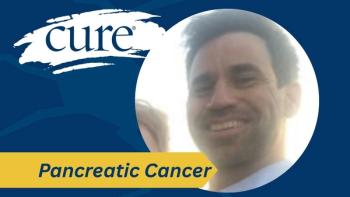
Waiting (And Waiting...) Is a Part of the Cancer Journey
It's not just time spent sitting in the lobby. Waiting is a way of life for people with cancer.
How do you make a universal cancer experience more palatable, and maybe even a little entertaining? If you're on social media, one way is to check-in with #WaitingRoomFeet. I first saw this hashtag a couple of years ago when an online friend posted that she'd been waiting for hours to see her oncologist and included a photo of her sandaled feet. Below that, numerous other acquaintances and friends had shared their own waiting-room-feet of the day.
Though I initially thought it was a commentary on the time patients lose waiting for behind-schedule healthcare providers, which it sometimes deservedly is, I've realized that such sharing goes beyond complaining.
In fact, it isn't even complaining.
Waiting is an unwanted given in almost any patient's life. For someone living with cancer, waiting is more than just sitting in a lobby to see a doctor. If mindfulness and living-in-the-moment are the paths to a better life with cancer, waiting is one of the reasons we need those paths.
What do we wait for? A brief list:
Doctors
Nurses
Insurer calls
Scans
Scan results
Treatment
Treatment side effects
Information
Life to go on
I am far from a master at any of this but I've learned a lot over the past five years with metastatic cancer. If I have to wait, then by default, that means there's something I need to know or do. Finding ways to de-escalate the physical anxiety surrounding healthcare waiting is helpful for me. As with a lot of people, stress and anxiety make it hard for me to concentrate and breathe normally. For that reason, I've found that moving, and especially repetitive movements, help me to regain a sense of calm. I suppose I may look like an enclosed polar bear (or worse) but I pace the lobby sometimes, I'll do soothing movements learned in qi gong, I breathe deeply and slowly. All standard anti-anxiety tools that work for me against garden-variety cancer waiting.
The physical waiting— for a doctor, for the scan contrast to be effective— can be frustrating if you're an impatient person but the mental waiting is the real poison. When a healthy friend recently had to wait for results from an unexpected medical test, she told me that it gave her a new perspective on my life of perpetual scans. "How do you do it?" she asked. It's a mind game of compartmentalizing, of finding a way to live without dread as the overriding emotion. It's why I do everything I possibly can to get outside daily, to find beauty in small things, to look for hope and to allow myself moments in which to consider the possible alternatives in scan results and accept them in advance so that I can keep living now.
Of course, it's that final item - waiting for life to go on - that is the most difficult to confront and control. Though I am now lucky enough, because of my good treatment response, to have scans every six months rather than every three, I think about my friends who are not as lucky and are living their lives in 3-month increments. I also think about the more fortunate, those who had cancer and are considered cured, whose lives can return to normal but who find themselves waiting for the other shoe to drop. And I consider friends told to "watch and wait" as cancer progressed slowly or other health issues threatened their cancer treatments.
Waiting is not just time spent sitting. It's not just time wasted. It is the fear that waiting is all we have left. Waiting is the patient's way of life. I suppose that's why the waiting-room-feet photos touch me, here we all are, endlessly waiting for something to change.




